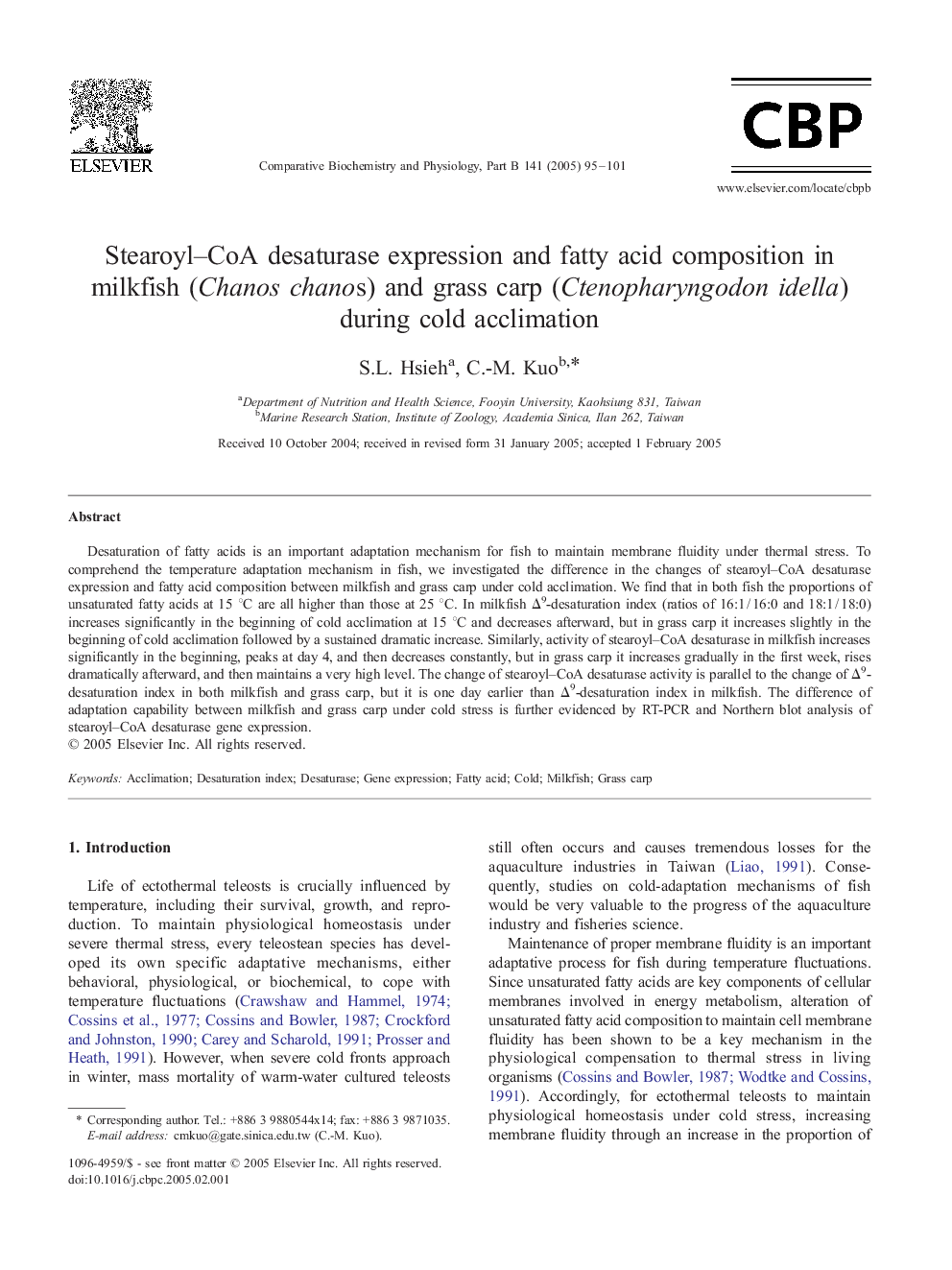| Article ID | Journal | Published Year | Pages | File Type |
|---|---|---|---|---|
| 10820571 | Comparative Biochemistry and Physiology Part B: Biochemistry and Molecular Biology | 2005 | 7 Pages |
Abstract
Desaturation of fatty acids is an important adaptation mechanism for fish to maintain membrane fluidity under thermal stress. To comprehend the temperature adaptation mechanism in fish, we investigated the difference in the changes of stearoyl-CoA desaturase expression and fatty acid composition between milkfish and grass carp under cold acclimation. We find that in both fish the proportions of unsaturated fatty acids at 15 °C are all higher than those at 25 °C. In milkfish Î9-desaturation index (ratios of 16:1 / 16:0 and 18:1 / 18:0) increases significantly in the beginning of cold acclimation at 15 °C and decreases afterward, but in grass carp it increases slightly in the beginning of cold acclimation followed by a sustained dramatic increase. Similarly, activity of stearoyl-CoA desaturase in milkfish increases significantly in the beginning, peaks at day 4, and then decreases constantly, but in grass carp it increases gradually in the first week, rises dramatically afterward, and then maintains a very high level. The change of stearoyl-CoA desaturase activity is parallel to the change of Î9-desaturation index in both milkfish and grass carp, but it is one day earlier than Î9-desaturation index in milkfish. The difference of adaptation capability between milkfish and grass carp under cold stress is further evidenced by RT-PCR and Northern blot analysis of stearoyl-CoA desaturase gene expression.
Related Topics
Life Sciences
Biochemistry, Genetics and Molecular Biology
Biochemistry
Authors
S.L. Hsieh, C.-M. Kuo,
